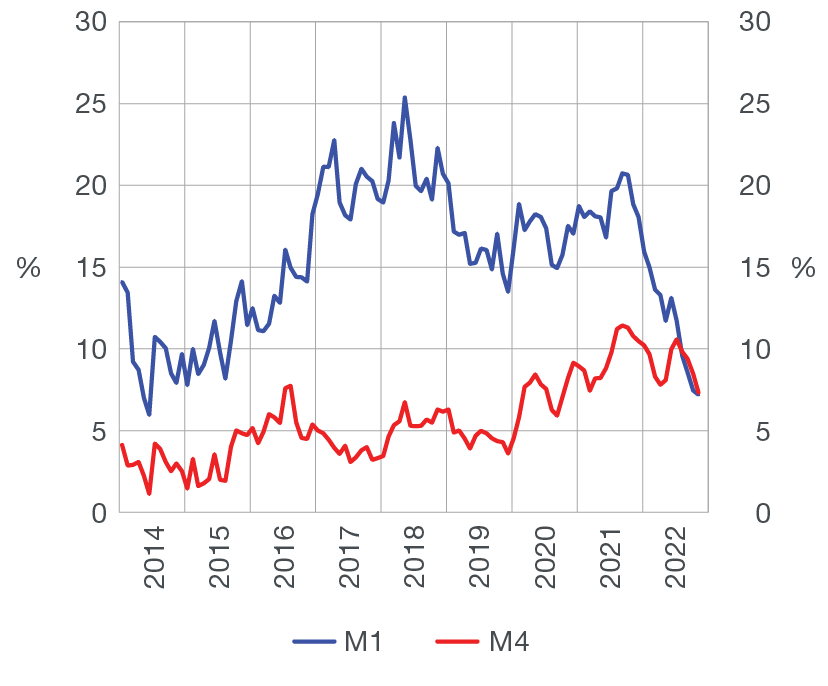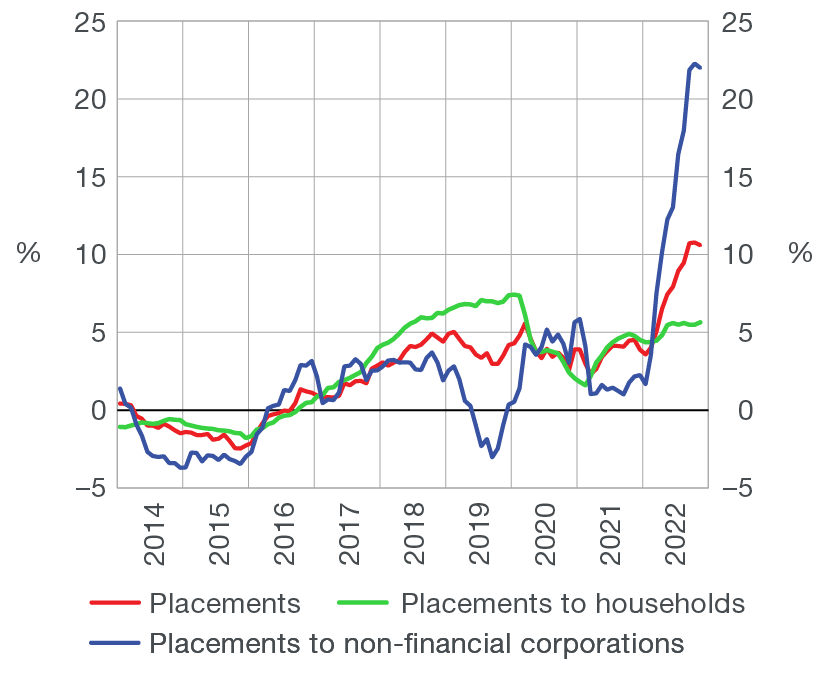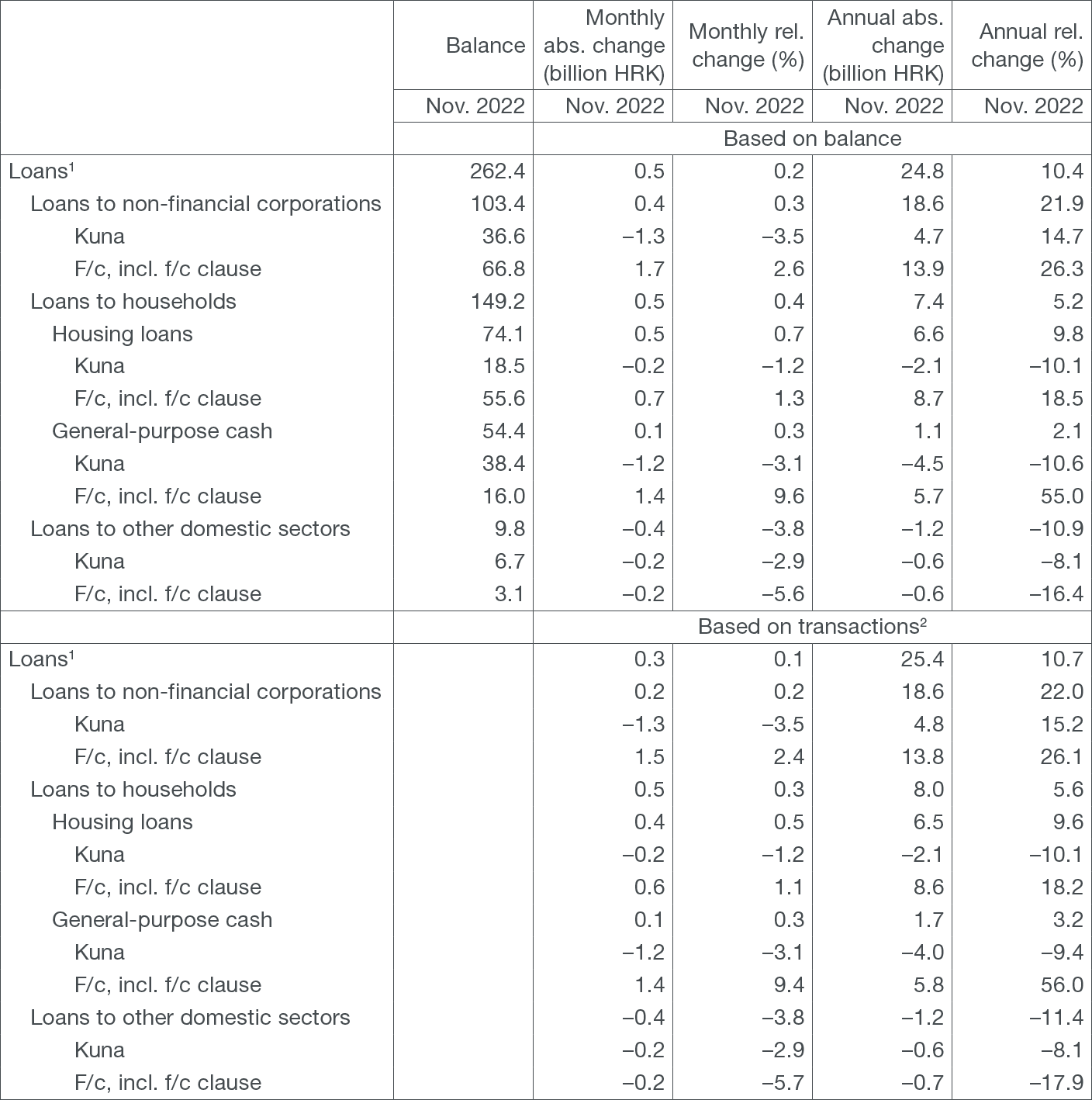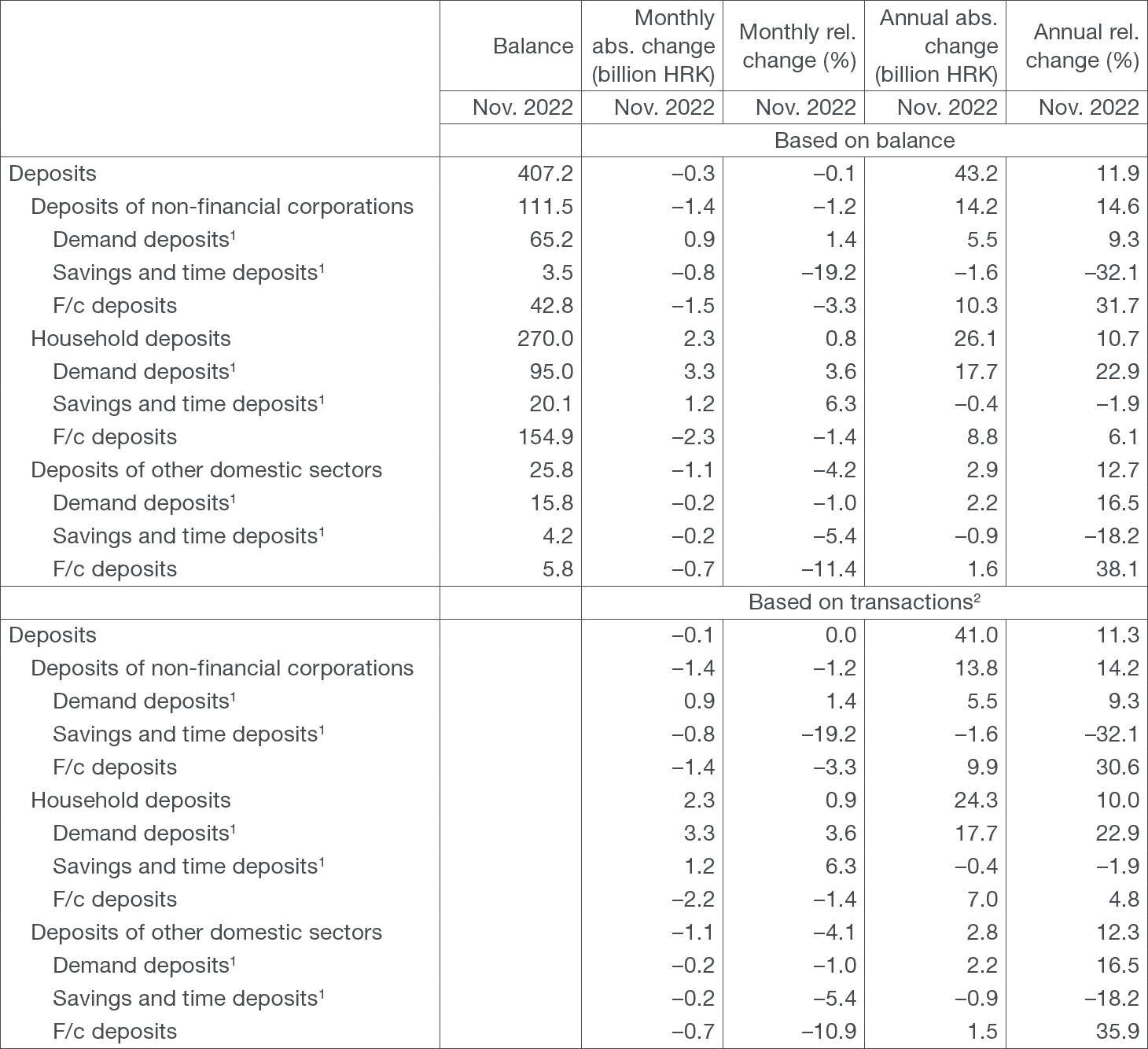From August 2023 the comments on statistics, a short description of selected, recently issued statistical data in the area of monetary statistics and the non-residents sector statistics, are no longer published. They are replaced by Statistical releases.
Comments on monetary developments for November 2022
Total liquid assets (M4) continued to fall in November. In the structure of M4, money (M1) increased slightly and quasi-money decreased. The slowdown in the growth of monetary aggregates M4 and M1 continued on an annual level. The strong fall in foreign currency deposits of domestic sectors due to their supply with euro cash also influences recent developments in monetary aggregates.
Total placements of monetary institutions to domestic sectors (except the central government) grew in November, reflecting the growth in both household and corporate lending. The annual growth of household placements accelerated only slightly, while the growth in corporate placements edged down due to somewhat weaker lending than in November of the previous year.
Total liquid assets (M4[1]) fell by HRK 3.2bn (0.7%, transaction-based) in November, mirroring the fall in net foreign assets (NFA) of credit institutions, while net domestic assets (NDA) increased (Table 1). The increase in NDA was mostly due to the growth in net claims on the central government but also to the growth in placements to other domestic sectors. Money (M1[2]), after three months of continuous decline, increased slightly in November (by HRK 0.3bn or 0.2%, transaction-based). In the structure of M1, funds in transaction accounts rose sharply ahead of the introduction of the euro, while currency outside credit institutions continued to decline (Table 3). The quasi-money fell markedly (by HRK 3.6bn or 1.5%, transaction-based) on the back of the strong fall in foreign currency deposits of domestic sectors, which may in part be attributed to the supply of domestic sectors with euro cash ahead of the introduction of the euro as the official currency. The impact of the forthcoming introduction of the euro on recent developments in monetary aggregates is also reflected in an increased turnover of foreign currency cash of natural persons in authorised currency exchange offices and banks. The growth of M1 continued to decelerate on an annual level (from 7.4% in October to 7.1% in November), albeit at a slower pace than in the previous several months, while the deceleration in the annual growth of M4 was much stronger (from 8.4% to 7.2%, transaction-based, Figure 1).
| Figure 1 Monetary aggregates annual rates of change based on transactions |
Figure 2 Placements annual rates of change based on transactions |
 |
 |
| Source: CNB. |
Total placements of monetary institutions to domestic sectors (excluding the central government) increased by EUR 0.4bn or 0.2% (transaction-based) in November on the previous month, while their annual growth slowed down slightly, from 10.8% to 10.6% (Figure 2). Total loans, which account for the largest share of total placements, grew by HRK 0.3bn (0.1%) on a monthly level as a result of the increase in loans to households and corporates (HRK 0.5bn and HRK 0.2bn respectively) and the decrease in loans to other domestic sectors (HRK 0.4bn) (Table 2). In the household sector, housing loans continued to grow at a somewhat stronger pace (HRK 0.4bn) while general-purpose cash loans increased very slightly (HRK 0.1bn). The increase in housing and general-purpose cash loans accelerated slightly in annual terms (to 9.6% and 3.2%, respectively), so that the annual growth rate of total household loans grew only barely, from 5.5% to 5.6%. By contrast, lending to corporates was weaker than in November of the previous year, and the annual growth in loans to this sector decelerated from 22.3% in October to 22.0% in November, after growing steadily since the beginning of the year.
Table 1 Summary consolidated balance sheet of monetary institutions
in billion HRK and %

1 The sum total of asset items 2.2 to 2.8 of Bulletin Table B1: Consolidated balance sheet of monetary financial institutions.
2 The sum total of liability items 2 to 5 of Bulletin Table B1: Consolidated balance sheet of monetary financial institutions.
Source: CNB.
Table 2 Loans (except the central government) and main components
in billion HRK and %

1 In addition to loans to households and corporates, they also include loans to the local government and other financial institutions.
2 The transactions show changes that exclude the effects of exchange rate changes, securities price adjustments, reclassification and write-off of placements, including the sale of placements in the amount of their value adjustment.
Source: CNB.
Table 3 Deposits (except the central government) and main components
in billion HRK and %

1 Includes only kuna sources of funds of credit institutions.
2 The transactions show changes that exclude the effects of exchange rate changes, securities price adjustments, reclassification and write-off of placements, including the sale of placements in the amount of their value adjustment.
Source: CNB.
For detailed information on monetary statistics as at November 2022, see:
Central bank (CNB)
Other monetary financial institutions
